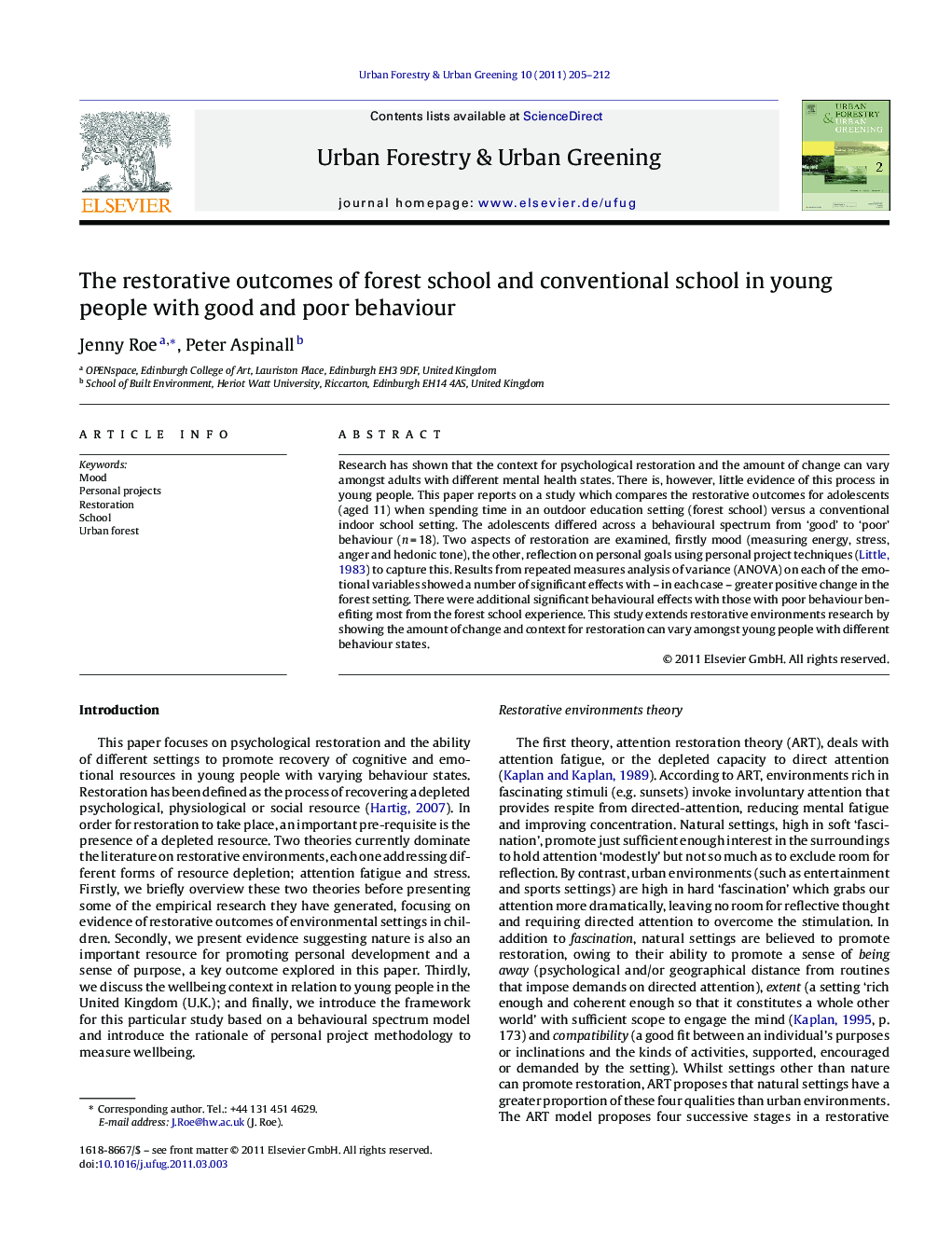| Article ID | Journal | Published Year | Pages | File Type |
|---|---|---|---|---|
| 94230 | Urban Forestry & Urban Greening | 2011 | 8 Pages |
Research has shown that the context for psychological restoration and the amount of change can vary amongst adults with different mental health states. There is, however, little evidence of this process in young people. This paper reports on a study which compares the restorative outcomes for adolescents (aged 11) when spending time in an outdoor education setting (forest school) versus a conventional indoor school setting. The adolescents differed across a behavioural spectrum from ‘good’ to ‘poor’ behaviour (n = 18). Two aspects of restoration are examined, firstly mood (measuring energy, stress, anger and hedonic tone), the other, reflection on personal goals using personal project techniques (Little, 1983) to capture this. Results from repeated measures analysis of variance (ANOVA) on each of the emotional variables showed a number of significant effects with – in each case – greater positive change in the forest setting. There were additional significant behavioural effects with those with poor behaviour benefiting most from the forest school experience. This study extends restorative environments research by showing the amount of change and context for restoration can vary amongst young people with different behaviour states.
